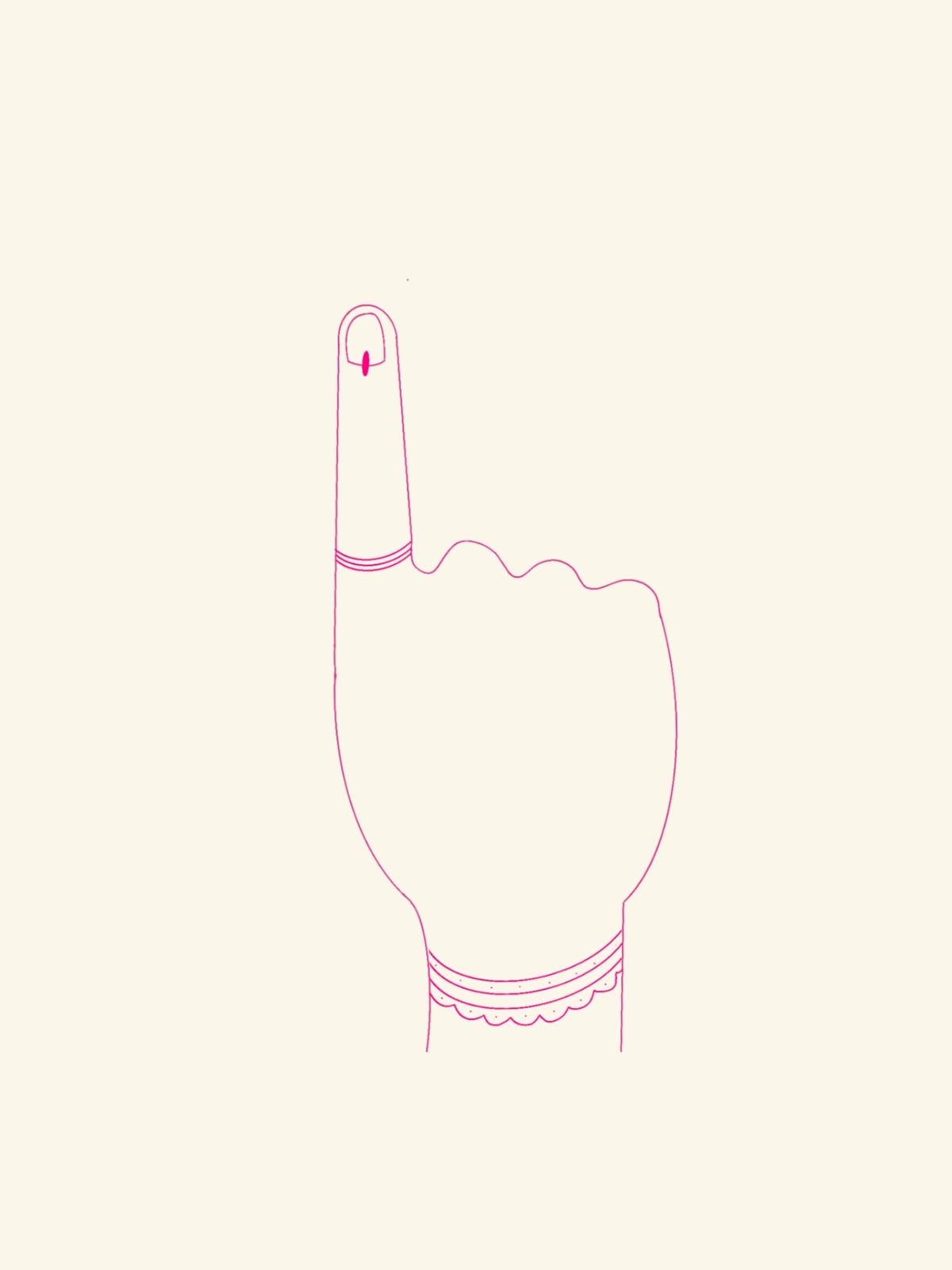Kejriwal’s “Money for Women” Scheme: Welfare or Bribery?

Every Indian election season feels like a massive shopping festival. Politicians turn into salespeople, each trying to lure customers (voters) with the best deals. As elections come around, politicians rediscover their love for the “common man” (or, in this case, the “common woman”).
In December 2024, Arvind Kejriwal announced what sounded like a game-changer: ₹1,000 per month for eligible women. A month later, he revised it upwards to ₹2,100 per month if his party returned to power. But AAP didn’t win. Instead, BJP swept in with its own offer, which was more generous, more immediate, and launched the Mahila Samriddhi Yojana, which promises ₹2,500 per month for economically weaker section women aged 18-60.
So here we are, in a situation where one party makes a cash promise, the other outbids it, and voters pick the higher bidder. The question writes itself: is this welfare, or is this just auction-style bribery with taxpayer money? Let’s peel this onion layer by layer.
Welfare vs. Bribery
The central ethical dilemma here is whether this scheme is genuine welfare or thinly disguised bribery.
Welfare is when the government provides support to improve citizens’ lives, like subsidised education, health insurance, or food security schemes. These are investments in society’s future.
Bribery, in the electoral sense, is when benefits are promised mainly to buy votes, with little thought to long-term sustainability.
The tricky part is that the line between the two is blurry.
Take an example from Tamil Nadu. When M. G. Ramachandran (MGR) started the mid-day meal scheme in the 1980s, critics scoffed and called it populist bribery. Today, it’s considered a revolutionary welfare program that improved child nutrition and boosted school attendance.
So where does Kejriwal’s scheme fall?
His supporters argue that direct money to women empowers them. Women who receive this money can decide how to spend it (on food, children’s education, household needs, or even personal savings). Some argue the opposite: that this is simply a pre-election gimmick. After all, why announce it right before elections instead of making it a long-term, budgeted policy?
However, Kejriwal’s timing and the subsequent bump in the amount make the promise feel closer to the second category. It’s like saying, “Here’s my price; what’s yours?” The BJP then simply responded with a higher bid. The message to the voter was clear: why settle for ₹2,100 when you can get ₹2,500?
Empowerment without systemic change often becomes a temporary cash transfer that evaporates at the grocery store counter. The deeper ethical worry is whether democracy should work like a supermarket aisle, with citizens choosing between “₹2,100” and “₹2,500” like rival soap brands.
The ethical answer, then, depends on intent. If designed as long-term welfare, it is empowering. If rolled out just before elections with no plan for sustainability, it leans toward bribery.
Fiscal Sustainability
All noble intentions aside, governments don’t have magic money trees. When leaders promise direct cash handouts, the money has to come from somewhere: higher taxes, borrowing, or cutting budgets in other sectors like education, healthcare, or infrastructure.
The trouble with election-time promises is that they are made with short-term political gain in mind, not long-term fiscal health. Voters are told they will get cash, but no one is told what will be sacrificed. Will the government spend less on schools? Will the metro expansion be delayed? Will taxpayers end up footing a higher bill later?
Sp, the big worry is opportunity cost. Every rupee spent here means one rupee less for infrastructure, education, or healthcare. Should the government prioritise direct transfers over, say, building better hospitals or improving schools?
Critics argue that such schemes bring immediate satisfaction but may not build long-term assets for society.
Dependency Concern
Another economic debate is about dependency. Will people stop working if they get “free money”?
Schemes like this may create a culture of entitlement, where people expect the government to hand them benefits instead of working for themselves. Younger people may prefer to live off cash transfers rather than seek employment.
But evidence from around the world also suggests otherwise. For example, Germany Universal Basic Income (UBI) Pilot (2025 results) showed that “Recipients of basic income payments were just as likely to work as people in the control group, with 87% of both groups working at the end of the trial.”
In fact, in poor households, small cash transfers can reduce stress and allow people to focus better on work. And let’s be honest: if money really made people lazy, then billionaires should be the laziest people alive. Laziness may not be only about money.
Structural Change in Gender Equality vs. Short-Term Relief
Supporters of the scheme often highlight the gender angle. In India, many women, especially in lower-income households, have little or no personal income. Their spending decisions are controlled by fathers, husbands, or brothers. Direct cash transfers can give them financial independence and decision-making power.
There is also evidence from global studies that women are more likely to spend money on essential needs. For example, a World Bank report found that when women control money, it is more likely to be used for children’s nutrition, education, and healthcare. In contrast, men are statistically more likely to spend extra income on personal consumption, like alcohol or entertainment.
So, giving money to women can have multiplier effects on family welfare.
However, it can be argued that while this provides short-term relief, it does not address deeper structural problems. India’s female labour force participation is among the lowest in the world; only about 25% of women are formally employed. Social barriers, safety concerns, unequal pay, and lack of childcare are major issues.
Simply giving money does not solve these problems. It is like giving painkillers to someone with a chronic illness: it relieves pain temporarily but does not cure the disease. For long-term empowerment, governments must focus on jobs for women, workplace safety, education, and healthcare.
So while the scheme may help women in the short term, without structural reforms, it risks becoming a band-aid solution.
Election Ethics
The timing of the scheme raises big questions. Is it ethical for governments to announce direct cash transfers right before elections?
The Supreme Court of India has debated this issue several times. Such promises may distort democracy, because voters may be swayed by immediate personal gain rather than evaluating a government’s overall performance. In other words, it reduces elections to an auction where votes are sold to the highest bidder.
On the other hand, supporters argue that welfare is a legitimate policy tool. If a government believes in cash transfers, why shouldn’t it include them in its election manifesto? After all, democracy is about offering choices, and voters are free to decide whether to believe the promise or not.
The ethical line is thin. If the scheme is backed by budgetary planning and implemented consistently after elections, it can be defended as policy. But if it disappears after votes are counted, it was nothing more than an election gimmick.
Kejriwal’s scheme is not the first of its kind. From free rice and mid-day meals to free TVs and scooters, Tamil Nadu has a long history of welfare politics. Andhra Pradesh and Telangana have also experimented with direct cash transfers. Once one party makes such a promise, others feel pressured to match it.
This creates what economists call a race to the bottom, or more humorously, a “freebie race.” Parties keep outbidding each other with bigger promises, whether or not the government can afford them. In Punjab, after AAP announced cash transfers for women, rival parties announced similar schemes. Soon, the debate shifted from “whether” to “how much.”
The danger is that policy-making becomes less about long-term national interest and more about short-term vote-catching. Yet, one could argue that it also forces political parties to at least talk about welfare, rather than ignoring it altogether.
Ultimately, whether this scheme is good or bad depends less on the promise itself and more on how it is executed. If integrated into a sustainable, well-planned welfare policy, it can empower women and benefit families. If used only as an election gimmick, it risks being another chapter in India’s long history of populism.
As voters, the real responsibility is ours: to look beyond short-term handouts and ask the tougher questions. Who will pay for this scheme? Will it last beyond the election? And most importantly, will it help women not just today, but in the decades to come?
Because at the end of the day, good economics may not always win elections, and good politics may not always make economic sense. But if we fail to balance both, we’ll just keep running in circles like Mario Kart, but with rupees instead of coins.
